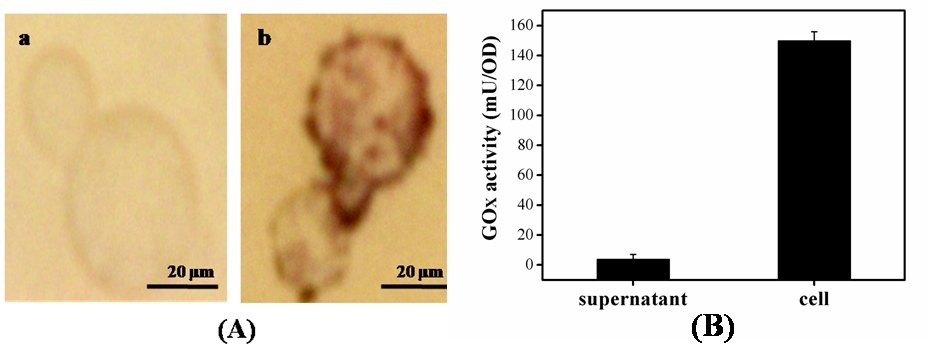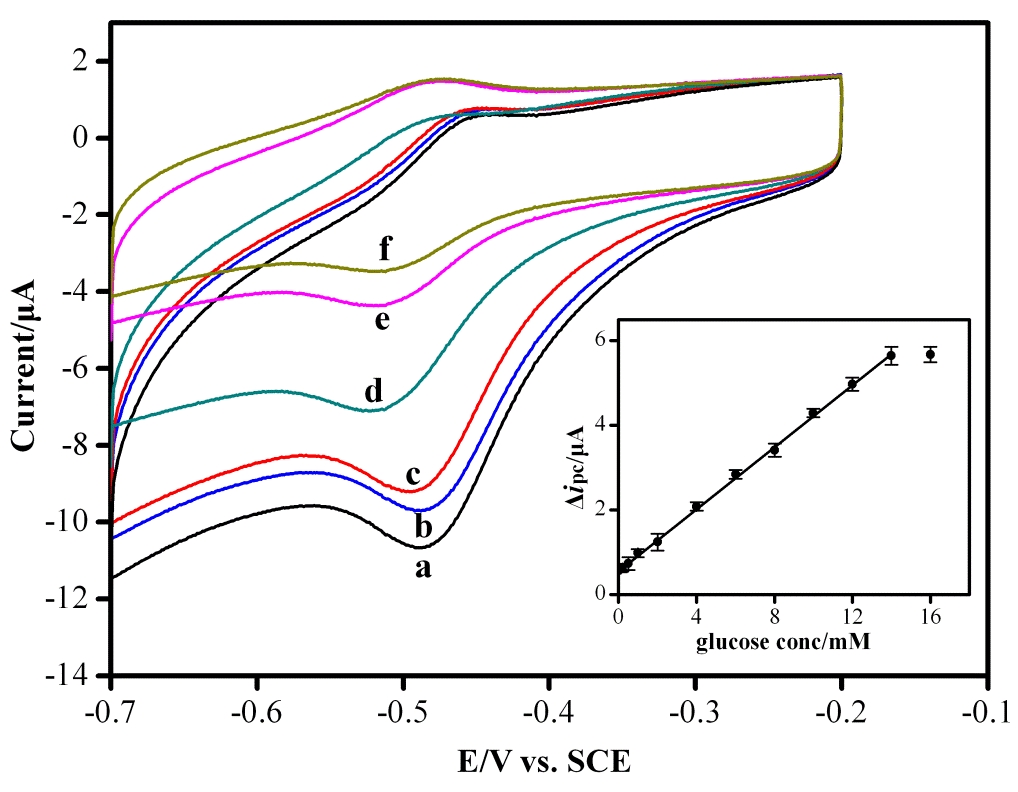QIBEBT Develops Novel Glucose Biosensor Based on Yeast Surface Displaying Enzyme
The conventional enzyme-based electrode requires immobilization process, which often result in low immobilization efficiency, enzyme activity loss, enzyme leakage and high cost, and have become the bottleneck in the area of enzyme-based biosensor and biofuel cell. The major advantage in the development of microbial surface display enables the direct utilization of whole cell biocatalysts with recombinant protein displayed on the cell surface, thus providing an economical alternative to traditional production of purified enzymes.
The Qingdao Institute of Bioenergy and Bioprocess Technology, Chinese Academy of Sciences (QIBEBT, CAS) developed a novel glucose biosensor based on glucose oxidase (GOx) yeast surface displayed system.
As introduced by Prof. LIU Aihua, leader of the Biosensing Group at the QIBEBT,his team has previously constructed D-xylose or glucose biosensors based on E. coli surface-displayed xylose dehydrogenase and glucose dehydrogenase, respectively. As a eukaryotic system, the yeast surface display is generally thought to be suitable to express eukaryotic proteins, which have functional activity after post-translational modifications including glycosylation and disulfide bond isomerization.
GOx is an important glycoprotein derived from eukaryotes. It is widely used in food preservation, pharmaceutical industry production of potassium gluconate, calcium gluconate, zinc gluconate and other trace elements in health-care products, as well as preparation of blood glucose test strips and glucose biosensor.
In the present work, Dr. LIU mentioned, GOx was displayed on yeast cell surface using a-agglutinin as an anchor motif. Both the immunochemical analysis and enzymatic assay showed that active GOx was efficiently expressed and translocated on the cell surface (Figure 1). Compared with secreted expressed GOx, the cell surface displayed GOx demonstrated excellent enzyme properties, such as good stability within a wide pH range (pH 3.5-11.5), good thermostability (retaining 84.2% enzyme activity at 56 °C) and high D-glucose specificity. In addition, direct electrochemistry was achieved at a Nafion/GOx-yeast/multiwalled-carbon-nanotube modified glassy carbon electrode (Nafion/GOx-yeast/MWNTs/GCE), suggesting that the host cell of yeast did not have any adverse effect on the electrocatalytic property of the recombinant GOx. Thus, a novel electrochemical glucose biosensor based on this GOx-yeast was developed with the dynamatic linear range of 0.1-14 mM glucose. The biosensor is stable, specific, reproducible, simple, and cost-effective, which can be applicable for real sample detection (Figure 2). (Analytical Chemistry 2013, 85, 6107-6112).
The proposed strategy to construct robust GOx-yeast may be applied to explore other oxidase (such as alcohol oxidase, lactate oxidase, and glutamate oxidase)-displaying-system-based whole-cell biocatalysts, which can find broad potential application in biosensors, bioenergy, and bio-industrial catalysis.
 |
|
Figure 1. (A) Photograph of (a) yeast cell control and (b) GOx surface-displayed yeast. (B) GOx activity of the surface-displayed yeast cells.(Image by Biosensing Group at the QIBEBT)
|
 |
| Figure 2. Cyclic voltammograms of Nafion/GOx-yeast/MWNTs/GCE in PBS buffer (pH 7.4) containing different concentrations of glucose: 0.0 mM (trace a), 0.1 mM (trace b), 0.5 mM (trace c), 2.0 mM (trace d), 8.0 mM (trace e), and 12.0 mM (trace f). Inset shows a typical calibration graph of the glucose biosensor. (Image by Biosensing Group at the QIBEBT) |
References:
http://pubs.acs.org/doi/abs/10.1021/ac400979r
http://pubs.acs.org/doi/abs/10.1021/ac202513u
http://www.sciencedirect.com/science/article/pii/S095656631100827X
http://www.sciencedirect.com/science/article/pii/S0956566313000535
Contact:
Prof. Dr. LIU Aihua
Email: liuah@qibebt.ac.cn